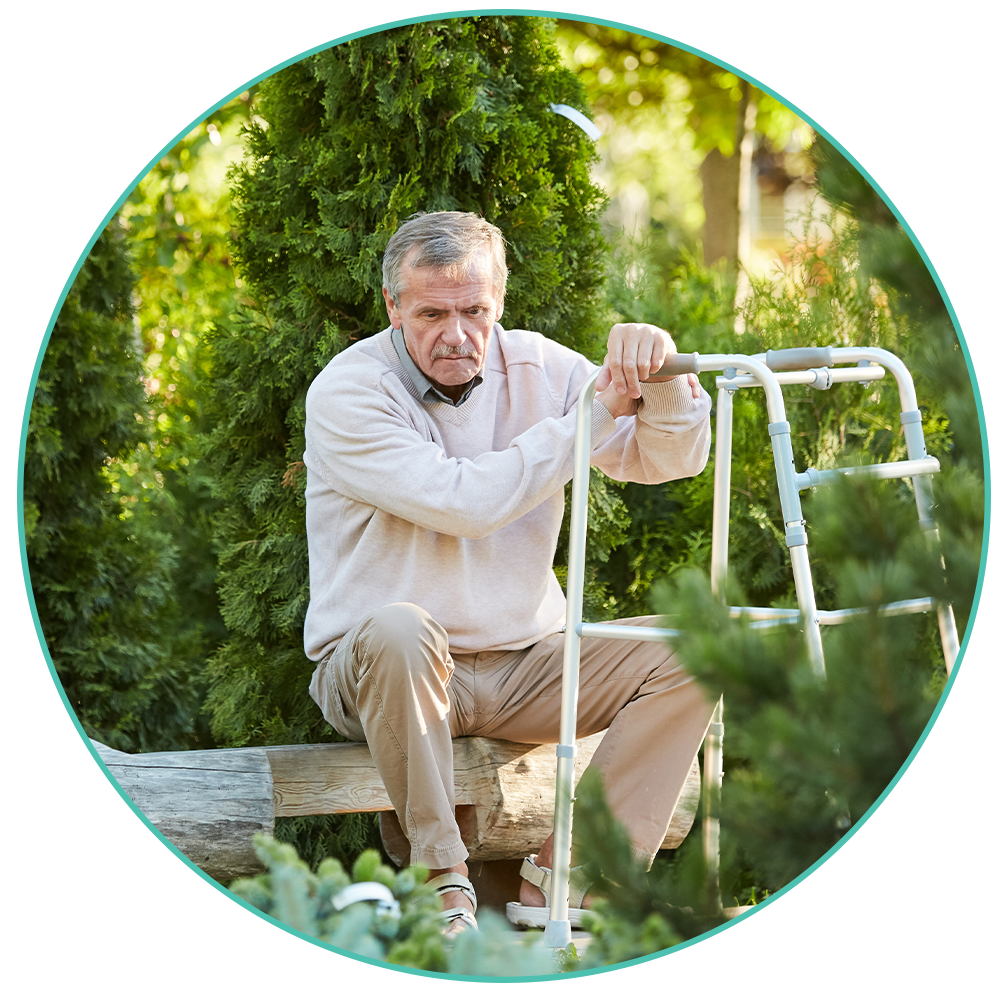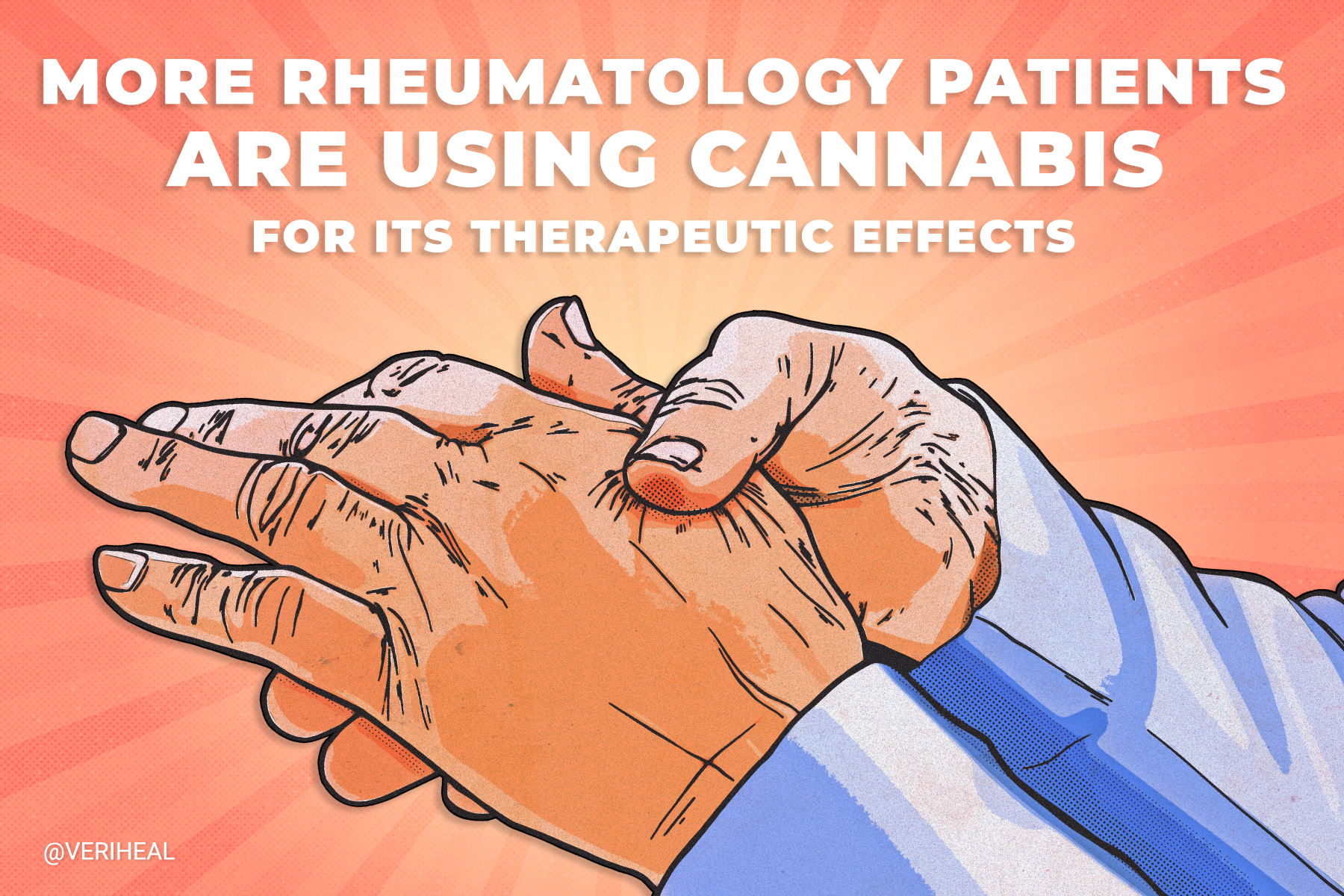Bone Health: Can Medical Marijuana Help?

Osteoporosis and poor bone health can lead to fractures and complications later in life.
Research around the impact of cannabis on bone health is in its early stages. However, some evidence suggests that cannabis can impact bone resorption and bone density.
Read on to learn the ins and outs of cannabis for bone health.
- Can Cannabis Impact Bone Health?
- Medical Cannabis For Osteoporosis
- Can Cannabis Increase the Risk of Osteoporosis?
- Talking to your Doctor about Cannabis for Osteoporosis
Can Cannabis Impact Bone Health?
In addition to the use of medical cannabis for chronic pain, patients with osteoporosis may also benefit from cannabinoids directly where the problem is: in the bones.
Cannabis contains over 120 cannabinoids including Δ9-tetrahydrocannabinol (THC) and cannabidiol (CBD). These cannabinoids interact with the body through the endocannabinoid system.
The endocannabinoid system contains neurotransmitters that help regulate pain perceptions and—relevant for osteoporosis patients—may influence bone resorption and bone mineral density.
Cannabinoids and Bone Health
Cannabinoids are compounds in the cannabis plant that interact with different receptors in the body. These receptors are part of a larger endocannabinoid system.
Some endocannabinoid receptors are present in bone cells, indicating that cannabis use may impact the effects of osteoporosis.
The endocannabinoid system consists of fat-based neurotransmitters that our bodies naturally produce.
These neurotransmitters—called endocannabinoids— are responsible for regulating several processes in the body including pain perception, appetite, motor function, and immune responses (9). According to research done over the past 30 years, these endocannabinoids may also play a role in regulating bone density.
When cannabis is ingested, it makes contact with several receptors that influence endocannabinoid levels in the body.
Cannabinoid receptors CB1 and CB2, along with G protein-coupled receptor GPR55, are among the receptors that influence the production of endocannabinoids.
Generally, CB1 and CB2 receptors interact with different parts of the body. CB1 receptors are typically thought to be in the brain and central nervous tissues. CB2 receptors have been found in a variety of immune tissues and organs of the body.
Research on bones and endocannabinoids over the last 30 years has shown that CB1, CB2, and GRP55 receptors are present in osteoblasts and osteoclasts, which are two major types of cells found within bones (5, 9).
Osteoblasts are cells responsible for new bone formation while osteoclasts are responsible for aged bone resorption. These cells work together in a fine balance to build bone tissue and maintain bone health and density. This balance is called bone homeostasis.
When these cells are not in balance, osteoporosis, and other bone diseases may occur.
As such, CB1, CB2, and GRP55 receptors can play a role in regulating bone activity, including resorption and bone remodeling.
Therefore, some evidence exists that medical cannabis use could potentially reduce bone deterioration caused by osteoporosis—though more research is necessary to officially make this claim.
As such, while this research is promising regarding cannabinoids and osteoporosis, it is still in its early stages. Healthcare professionals still do not fully understand what kind of role cannabis may play in our bones as we age.
Can Medical Cannabis Help Osteoporosis?
Medical cannabis may impact bone health and the risk of osteoporosis.
Though research is in its early stages, cannabinoid receptors in the bones demonstrate that medical cannabis can potentially help osteoporosis and bone resorption.
What is Osteoporosis?
Osteoporosis is a bone disease that occurs when bones lose density. In cases of osteoporosis, the body cannot make enough replacement bone mass to return to normal bone density.
In fact, the word “osteoporosis” means porous bone (30).
Bone loss from osteoporosis causes fragility and brittleness in bone, making them more prone to fractures and other serious health consequences (16).
Osteoporosis Risk Factors
Osteoporosis is most common in patients who are over 50 years old.
The CDC currently endorses screening for people born female over 65. Doctors may also recommend that patients born female be tested at age 50 or older if their medical history contains certain risk factors, such as family history (4).
People born male should undergo screening starting at the age of 70.
Adults with certain conditions like rheumatoid arthritis or taking daily bone mass-decreasing medications like glucocorticoids) may also be at risk for osteoporosis.
Other risk factors include:
- Weight under 128 pounds
- Low dietary calcium intake
- Previous fracture
- Smoking
- Drinking three or more units of alcohol per day
- White or Asian race
- Taking certain medications such as
- Undergoing gastric bypass surgery
Additionally, there are several health issues that can increase the risk of osteoporosis, including certain autoimmune, endocrine, gastrointestinal, and blood and bone marrow disorders (30).
Other ailments that increase the risk of osteoporosis include:
- Cancer
- Neurological conditions, such as Parkinson’s disease or a stroke
- Depression
- Eating disorders
- HIV/AIDS
- Chronic obstructive pulmonary disease (COPD)
- Chronic kidney disease
- Liver disease
- Scoliosis
- Weight loss
Osteoporosis Signs and Symptoms
Osteoporosis is often considered a silent ailment. In other words, many patients are unaware that they have osteoporosis until they experience bone fractures.
Nevertheless, low bone density and bone fragility may be discovered earlier after a routine osteoporosis screening.
Low bone density can impact bone strength.
Patients with this disease tend to have breaks that occur most commonly in the hips, spine, or wrists (30). Over time, these bone breaks take longer and longer to heal (4).
Osteoporosis symptoms vary depending on the locations of the bone breaks. These breaks are often accompanied by pain, bruising, muscle spasms, and decreased range of motion and mobility. The patient is often hospitalized for a few days after a fragility fracture.
Medical Cannabis & Osteoporosis Research
A recent study from Cannabis and Cannabinoid Research examined the use of two different cannabis-based medications in 83 participants over 7 days. ADD how it affected bone turnover (14). Bone turnover is the balance between cells that create bone homeostasis.
These healthy participants were initially given a blood test looking for markers of bone resorption. These blood tests were repeated at various points after the administration of cannabis products.
In addition to a control placebo that contained no cannabis, some groups of patients received an oil containing 120-480 mg CBD and 5.4-21.6 mg THC ratio oil. Alternatively, participants received soft gel containing .06 mg CBD and 5-20 mg THC (14).
Ultimately, researchers found that the marker for bone resorption increased in participants that had received cannabis or CBD oil.
Further research and longer dosing periods are still needed about the effects of marijuana on bone health. However, this research shows that medical marijuana and its cannabinoids could help patients with osteoporosis absorb and rebuild dead bone cells.
Does Cannabis Increase the Risk of Osteoporosis?
Despite all of the positive research on the benefits of targeting the endocannabinoid system for osteoporosis and bone health, some research exists that questions if cannabis can be harmful to bones.
Research published in the American Journal of Medicine completed a cross-sectional study to determine if there is an association between heavy cannabis smoking and low bone mineral density.
This study examined 114 patients from 2011 to 2013 who smoke cannabis and divided them into heavy user and moderate user groups (23).
This study found that users who participated in heavy marijuana use had lower levels of total hip bone mineral density, lower spine bone mineral density, and a lower body mass index (BMI) compared to a control group of patients who do not use cannabis (23). Researchers also found that the heavy smoker group had a higher fracture rate.
Researchers in this study concluded that heavy cannabis use is associated with low bone density, low BMI, high bone cell turnover, and an increased risk of fracture (23).
Talking to your Doctor about Cannabis for Osteoporosis
Consult with a doctor if you’re unsure whether using cannabis is the right step for your bone health.
If you’re worried you may be at risk for osteoporosis, a doctor can use the Fracture Risk Assessment Tool (FRAX) to determine your risk level for a major osteoporotic fracture. FRAX was developed and validated by the WHO and is used differently according to country and race (34).
In the US, your primary care provider administers this questionnaire to determine if you need screening and treatment for osteoporosis.
During this exam, the doctor performs bone mass density (BMD) calculations using a low-level x-ray test called a dual-energy x-ray absorptiometry (DEXA) scan.
The results inform you and your doctor about whether you have normal bone density, low density (osteopenia), osteoporosis, or severe osteoporosis and whether you should start treatment (33).
Note: Veriheal does not intend to give this as professional medical advice. Do not attempt to self-diagnose or prescribe treatment based on the information provided on this page. Always consult a physician before making any decision on the treatment of a medical condition.
1. Apostu, D., Lucaciu, O., Mester, A., Benea, H., Oltean-Dan, D., Onisor, F., Baciut, M., & Bran, S. (2019). Cannabinoids and bone regeneration. Drug Metabolism Reviews, 51(1), 65–75. https://www.tandfonline.com/doi/abs/10.1080/03602532.2019.1574303
2. Bab, I., Zimmer, A., & Melamed, E. (2009). Cannabinoids and the skeleton: From marijuana to reversal of Bone Loss. Annals of Medicine, 41(8), 560–567. https://www.tandfonline.com/doi/full/10.1080/07853890903121025
3. Bab, I., & Zimmer, A. (2008). Cannabinoid receptors and the regulation of Bone Mass. British Journal of Pharmacology, 153(2), 182–188. https://bpspubs.onlinelibrary.wiley.com/doi/full/10.1038/sj.bjp.0707593
4. Centers for Disease Control and Prevention. (2022, May 20). Does osteoporosis run in your family? Centers for Disease Control and Prevention. Retrieved February 27, 2023, from https://www.cdc.gov/genomics/disease/osteoporosis.htm
5. Chen, X., Wang, Z., Duan, N., Zhu, G., Schwarz, E. M., & Xie, C. (2018). Osteoblast-osteoclast interactions. Connective tissue research, 59(2), 99–107. https://www.ncbi.nlm.nih.gov/pmc/articles/PMC5612831/
6. Clouse, G., Penman, S., Hadjiargyrou, M., Komatsu, D. E., & Thanos, P. K. (2022). Examining the role of cannabinoids on osteoporosis: a review. Archives of osteoporosis, 17(1), 146. https://link.springer.com/article/10.1007/s11657-022-01190-x
7. Ehrenkranz, J., & Levine, M. A. (2019). Bones and Joints: The Effects of Cannabinoids on the Skeleton. The Journal of clinical endocrinology and metabolism, 104(10), 4683–4694. https://academic.oup.com/jcem/article/104/10/4683/5523890
8. Gowran, A., McKayed, K., & Campbell, V. A. (2013). The cannabinoid receptor type 1 is essential for mesenchymal stem cell survival and differentiation: Implications for bone health. Stem Cells International, 2013, 1–8. https://www.hindawi.com/journals/sci/2013/796715/
9. Idris, A. I., & Ralston, S. H. (2012). Role of cannabinoids in the regulation of bone remodeling. Frontiers in Endocrinology, 3. https://www.frontiersin.org/articles/10.3389/fendo.2012.00136/full
10. Idris A. I. (2010). Cannabinoid receptors as target for treatment of osteoporosis: a tale of two therapies. Current neuropharmacology, 8(3), 243–253. https://www.ncbi.nlm.nih.gov/pmc/articles/PMC3001217/
11. Idris, A. I., Sophocleous, A., Landao-Bassonga, E., van’t Hof, R. J., & Ralston, S. H. (2008). Regulation of bone mass, osteoclast function, and ovariectomy-induced bone loss by the type 2 cannabinoid receptor. Endocrinology, 149(11), 5619–5626. https://academic.oup.com/endo/article/149/11/5619/2455293
12. Idris, A. I., van ‘t Hof, R. J., Greig, I. R., Ridge, S. A., Baker, D., Ross, R. A., & Ralston, S. H. (2005). Regulation of bone mass, bone loss and osteoclast activity by cannabinoid receptors. Nature medicine, 11(7), 774–779. https://www.ncbi.nlm.nih.gov/pmc/articles/PMC1430341/
13. Karsak, M., Cohen-Solal, M., Freudenberg, J., Ostertag, A., Morieux, C., Kornak, U., Essig, J., Erxlebe, E., Bab, I., Kubisch, C., de Vernejoul, M.-C., & Zimmer, A. (2005). Cannabinoid receptor type 2 gene is associated with human osteoporosis. Human Molecular Genetics, 14(22), 3389–3396. https://academic.oup.com/hmg/article/14/22/3389/614315
14. Kulpa, J., Eglit, G., Hill, M. L., MacNair, L., Yardley, H., Ware, M. A., Bonn-Miller, M. O., & Peters, E. N. (2022). Serum markers of bone turnover following controlled administration of two medical cannabis products in healthy adults. Cannabis and Cannabinoid Research. https://www.liebertpub.com/doi/full/10.1089/can.2022.0181
15. O’Connor, C. M., Anoushiravani, A. A., Adams, C., Young, J. R., Richardson, K., & Rosenbaum, A. J. (2020). Cannabinoid Use in Musculoskeletal Illness: a Review of the Current Evidence. Current reviews in musculoskeletal medicine, 13(4), 379–384. https://www.ncbi.nlm.nih.gov/pmc/articles/PMC7340702/
16. Porter, J. L., & Varacallo, M. (2022). Osteoporosis. In StatPearls. StatPearls Publishing. https://www.ncbi.nlm.nih.gov/books/NBK441901/
17. Rachel Elizabeth Whitaker Elam, M. D. (2023, February 21). Osteoporosis. Practice Essentials, Background, Pathophysiology. Retrieved February 27, 2023, from https://emedicine.medscape.com/article/330598-overview
18. Raphael-Mizrahi, B., & Gabet, Y. (2020). The Cannabinoids Effect on Bone Formation and Bone Healing. Current osteoporosis reports, 18(5), 433–438. https://link.springer.com/article/10.1007/s11914-020-00607-1
19. Raphael-Mizrahi, B., Attar-Namdar, M., Chourasia, M., Cascio, M. G., Shurki, A., Tam, J., Neuman, M., Rimmerman, N., Vogel, Z., Shteyer, A., Pertwee, R. G., Zimmer, A., Kogan, N. M., Bab, I., & Gabet, Y. (2022). Osteogenic growth peptide is a potent anti-inflammatory and bone preserving hormone via cannabinoid receptor type 2. ELife, 11. https://elifesciences.org/articles/65834
20. Saponaro, F., Ferrisi, R., Gado, F., Polini, B., Saba, A., Manera, C., & Chiellini, G. (2021). The role of cannabinoids in Bone Metabolism: A new perspective for Bone Disorders. International Journal of Molecular Sciences, 22(22), 12374. https://www.mdpi.com/1422-0067/22/22/12374
21. Shah, R. M., Saklecha, A., Patel, A. A., & Divi, S. N. (2022). Analyzing the Impact of Cannabinoids on the Treatment of Spinal Disorders. Current reviews in musculoskeletal medicine, 15(2), 133–142. https://www.ncbi.nlm.nih.gov/pmc/articles/PMC9076773/
22. Sophocleous, A., Robertson, R., Ferreira, N. B., McKenzie, J., Fraser, W. D., & Ralston, S. H. (2017). Heavy cannabis use is associated with low bone mineral density and an increased risk of fractures. The American Journal of Medicine, 130(2), 214–221. https://www.sciencedirect.com/science/article/abs/pii/S0002934316308518
23. Sophocleous, A., Robertson, R., Ferreira, N. B., McKenzie, J., Fraser, W. D., & Ralston, S. H. (2017). Heavy Cannabis Use Is Associated With Low Bone Mineral Density and an Increased Risk of Fractures. The American journal of medicine, 130(2), 214–221. https://pubmed.ncbi.nlm.nih.gov/27593602/
24. Tam, J., Ofek, O., Fride, E., Ledent, C., Gabet, Y., Müller, R., Zimmer, A., Mackie, K., Mechoulam, R., Shohami, E., & Bab, I. (2006). Involvement of neuronal cannabinoid receptor CB1 in regulation of bone mass and bone remodeling. Molecular pharmacology, 70(3), 786–792. https://pubmed.ncbi.nlm.nih.gov/16772520/
25. U.S. Department of Health and Human Services. (2022, December 15). Osteoporosis. National Institute of Arthritis and Musculoskeletal and Skin Diseases. Retrieved February 27, 2023, from https://www.niams.nih.gov/health-topics/osteoporosis
26. U.S. Department of Health and Human Services. (2022, December 15). Osteoporosis. National Institute of Arthritis and Musculoskeletal and Skin Diseases. Retrieved February 27, 2023, from https://www.niams.nih.gov/health-topics/osteoporosis/diagnosis-treatment-and-steps-to-take
27. U.S. National Library of Medicine. (n.d.). Osteoporosis. MedlinePlus. Retrieved February 27, 2023, from https://medlineplus.gov/osteoporosis.html
28. Wasserman, E., Tam, J., Mechoulam, R., Zimmer, A., Maor, G., & Bab, I. (2015). CB1 cannabinoid receptors mediate endochondral skeletal growth attenuation by Δ9-tetrahydrocannabinol. Annals of the New York Academy of Sciences, 1335, 110–119. https://nyaspubs.onlinelibrary.wiley.com/doi/10.1111/nyas.12642
29. Wang, J., Lu, H.-xia, & Wang, J. (2019). Cannabinoid receptors in osteoporosis and osteoporotic pain: A narrative update of Review. Journal of Pharmacy and Pharmacology, 71(10), 1469–1474. https://academic.oup.com/jpp/article/71/10/1469/6121970
30. What is osteoporosis and what causes it? Bone Health & Osteoporosis Foundation. (2023, February 24). Retrieved February 27, 2023, from https://www.bonehealthandosteoporosis.org/patients/what-is-osteoporosis/
31. Whyte, L. S., Ford, L., Ridge, S. A., Cameron, G. A., Rogers, M. J., & Ross, R. A. (2012). Cannabinoids and bone: endocannabinoids modulate human osteoclast function in vitro. British journal of pharmacology, 165(8), 2584–2597. https://www.ncbi.nlm.nih.gov/pmc/articles/PMC3423262/
32. Siris, E. S., Baim, S., & Nattiv, A. (2010). Primary care use of FRAX: absolute fracture risk assessment in postmenopausal women and older men. Postgraduate medicine, 122(1), 82–90. https://pubmed.ncbi.nlm.nih.gov/20107292/
33. Jeremiah, M. P., Unwin, B. K., Greenawald, M. H., & Casiano, V. E. (2015). Diagnosis and Management of Osteoporosis. American Family Physician, 92(4), 261–268. https://www.aafp.org/pubs/afp/issues/2015/0815/p261.html
34. FRAX – Fracture Risk Assesment Tool(N.d.). Retrieved March 14, 2023, from https://frax.shef.ac.uk/FRAX/tool.aspx?country=9

















